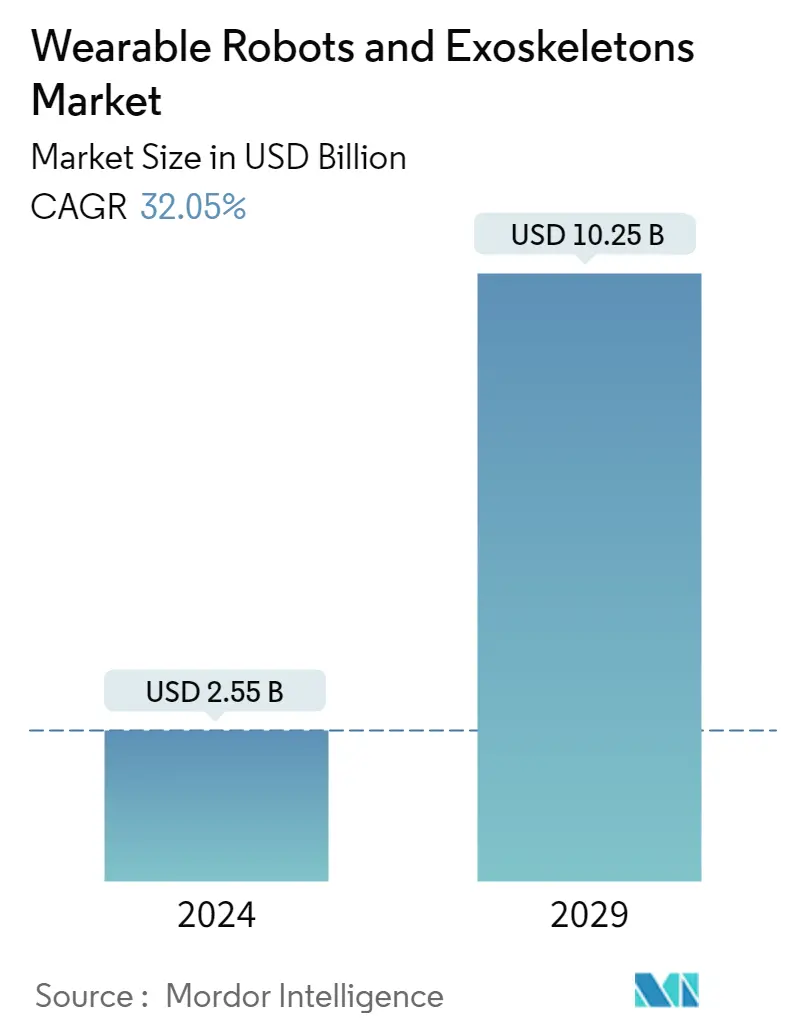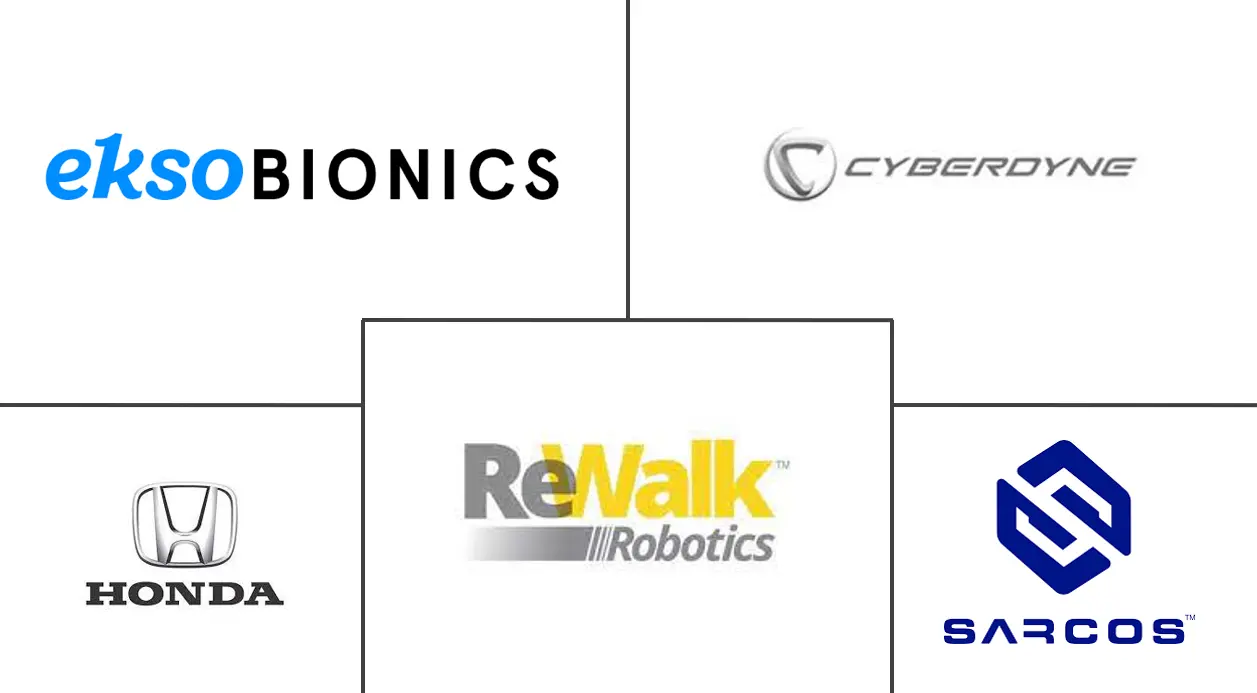Market Size of Wearable Robots and Exoskeletons Industry

| Study Period | 2019 - 2029 |
| Market Size (2024) | USD 2.55 Billion |
| Market Size (2029) | USD 10.25 Billion |
| CAGR (2024 - 2029) | 32.05 % |
| Fastest Growing Market | Asia Pacific |
| Largest Market | North America |
Major Players
*Disclaimer: Major Players sorted in no particular order |
Need a report that reflects how COVID-19 has impacted this market and its growth?
Wearable Robots & Exoskeletons Market Analysis
The Wearable Robots and Exoskeletons Market size is estimated at USD 2.55 billion in 2024, and is expected to reach USD 10.25 billion by 2029, growing at a CAGR of 32.05% during the forecast period (2024-2029).
Due to the emergence of the COVID-19 pandemic, the previously put lockdown measures across various regions significantly brought the robotic suppliers to a complete standstill for a short period. However, on the other hand, the pandemic has also created productive industry opportunities for the products and service providers to increase their presence in the market by primarily focusing on and addressing real clinical challenges in collaboration with clinicians and industry partners and in response to the evolving patients' needs.
- The wearable robots or exoskeletons are in their nascent stage of development and continuously evolving to exhibit maximum adoption in various industries, like healthcare, industrial, military, and defense, as these wearable exoskeletons assist personal mobility and can be worn on the human body and control and assists the movements of the person.
- In the healthcare sector, exoskeletons are helping patients' recovery by assisting and encouraging upright walking and relearning lost functions for stroke patients and people who are paralyzed. According to a study by Maxon Motor AG, the company estimated that approximately 185 million people use a wheelchair daily worldwide.
- For instance, Ekso GT is an exoskeleton by Esko Bionics, which is a wearable exoskeleton engineered as a comprehensive gait therapy tool and provides an unparalleled rehabilitation experience for patients and therapists. Additionally, due to technological developments in technology, a paralyzed man started walking using a mind-controlled exoskeleton in France.
- Various companies in the industry have already tested exoskeletons for their manufacturing capabilities and are ready to deploy them, which is likely to augment the market in the future further. For instance, automobile manufacturer, Ford, planned to deploy exoskeletons in fifteen assembly plants worldwide and adopted the EksoVest. This exoskeleton elevates and supports the arms of workers performing repeated overhead tasks. The adoption of EksoVests reduced workplace injuries by 83% during the trial period.
- There is also an increasing demand for exoskeletons to assist in personal mobility. An increasing number of patients with body movement disorders, such as Parkinson's disease, strokes, etc., are the prime factors accelerating the exoskeleton demand, as these diseases limit voluntary body movements and create problems in daily routine activities. For instance, according to the Parkinson's Foundation estimates, the number of people in the United States with Parkinson's disease may be around 930,000 in 2020, and it is expected to reach 1,200,000 by 2030.
